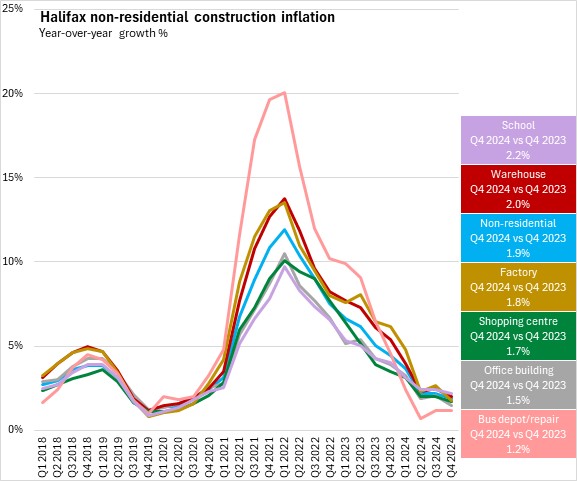Industry highlights from Economics and Statistics Division
Canada GDP by Industry, November 2024
The following statistics were released from the Economics and Statistics Division on January 31, 2025. For full details from this dataset, click here.
Month-over-month (November 2024 vs October 2024)
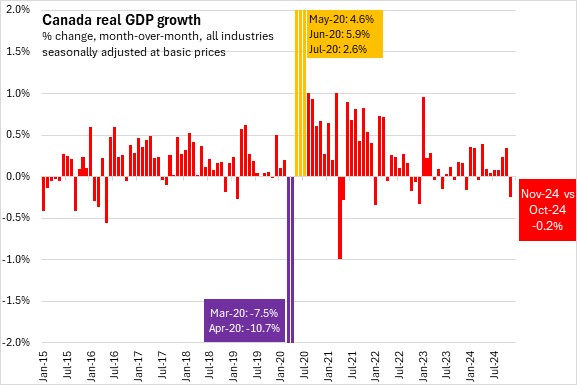
- Real Gross Domestic Product (GDP) in Canada declined 0.2% in November following revised growth of 0.3% in October 2024
- This was the first monthly decline after seven consecutive monthly increases
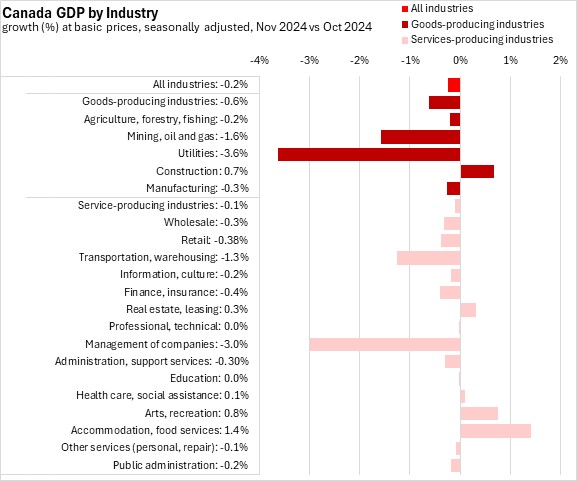
- In November 2024, 15 industries reported lower real GDP compared to the previous month
- Among broad industries, monthly GDP declines were fastest for utilities and management of companies
Year-to-date (January-November 2024 vs January-November 2023)
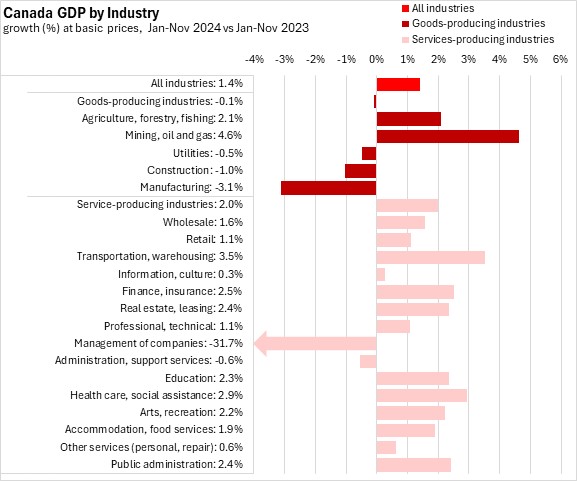
- The Canadian economy was 1.4% larger in January-November 2024 when compared to the same period of 2023
- Real GDP from goods producing industries was down 0.1% while there were gains in resource industries
- Both construction (-1.0%) and manufacturing (-3.1%) reported notable declines in real GDP
Building Construction Price Index, Q4 2024
The following statistics were released from the Economics and Statistics Division on February 4, 2025. For full details from this dataset, click here.
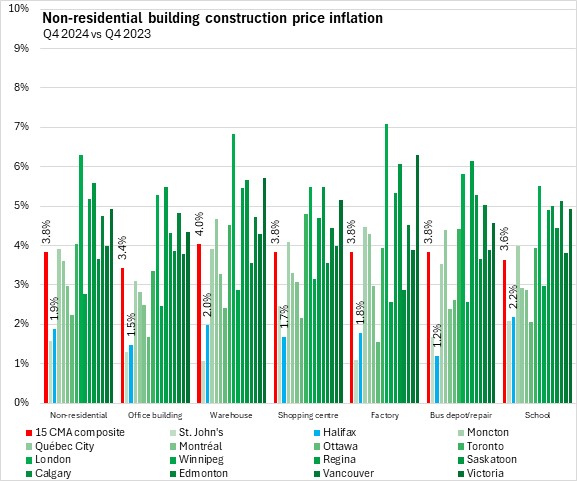
- Overall non-residential building costs were up 1.9% in Halifax from Q4 2023 to Q4 2024
- This was the second slowest growth in non-residential construction costs among major cities
- Across the 15 major Census Metropolitan Areas, overall non-residential building construction costs grew 3.8%
- In Halifax, the pace of building cost inflation slowed for most categories of non-residential structure: schools (+2.2%), warehouses (+2.0%), factories (+1.8%), shopping centres (+1.7%) and office buildings (+1.5%)
- There was no change in construction inflation for bus depot/repair facilities (+1.2%)
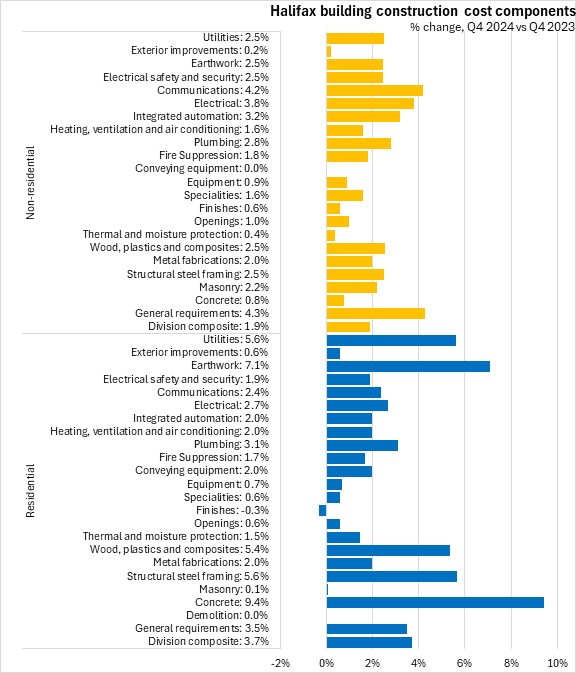
- Non-residential building construction costs grew most rapidly among general requirements
- There were no reductions in any non-residential building cost components, though conveying equipment reported no cost growth
Labour Market Trends, January 2025
The following statistics were released from the Economics and Statistics Division on February 7, 2025. For full details from this dataset, click here.
Ages 15+ (January 2025 vs December 2024, seasonally adjusted)
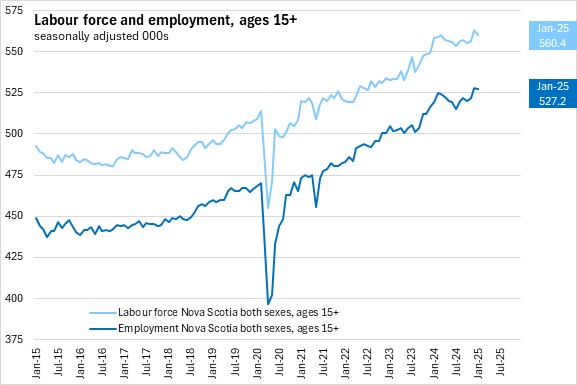
- Nova Scotia’s seasonally adjusted employment declined by 500 (-0.1%) to 527,200 in January following a rise of 6,000 (+1.2%) in the previous month
- The change in employment was attributable to a decline in full-time employment (-3,800) that offset the rise in part-time employment (+3,300)
- Nova Scotia’s labour force declined by 2,700 (-0.5%) to 560,400 in January 2025
Class of Worker and Industry (January 2025 vs December 2024, seasonally adjusted)
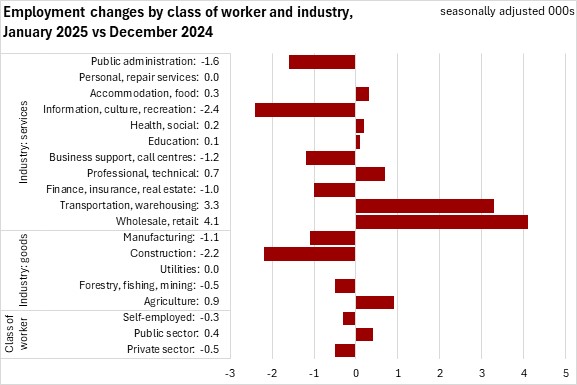
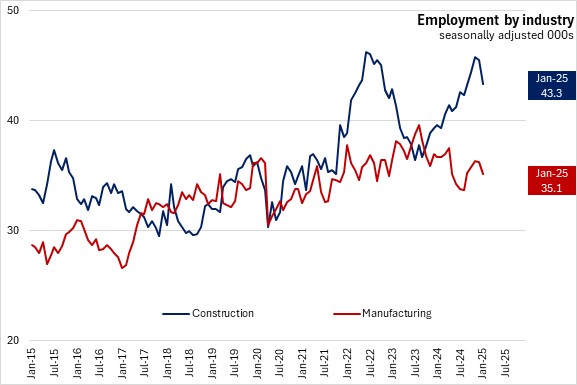
- The January 2025 employment change was due to declines for private sector (-500, -0.2%) and among the self-employed (-300, -0.6%) workers
- Public sector employment rose by 400 (+0.3%) in January
- Classified by industry, the fastest declines were in information/culture/recreation and construction
Labour Force Survey, January 2025
The following statistics were released from the Economics and Statistics Division on February 7, 2025. For full details from this dataset, click here.
Month Over Month (January 2025 vs December 2024, seasonally adjusted)
In Nova Scotia,
- The labour force decreased 2,700 (-0.5%) to 560,400
- Employment decreased 500 (-0.1%) to 527,200
In Canada,
- The labour force increased 61,200 (+0.3%) to 22,484,000
- Employment increased 76,000 (+0.4%) to 20,993,400
Year Over Year (January 2025 vs January 2024)
In Nova Scotia,
- The labour force increased 2,100 (+0.4%)
- Employment increased 7,800 (+1.5%)
In Canada,
- The labour force increased 666,800 (+3.1%)
- Employment increased 416,300 (+2.0%)

